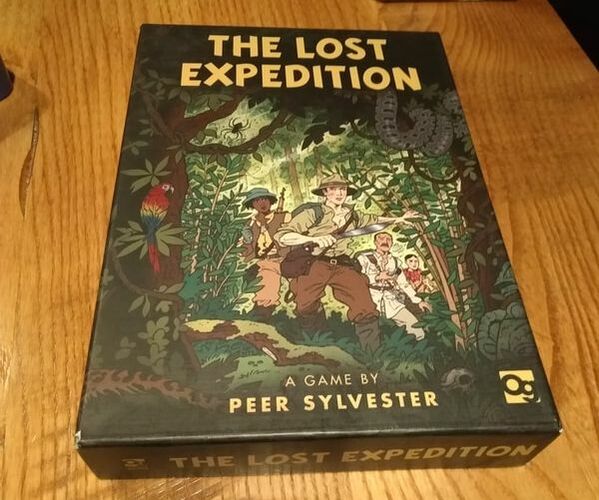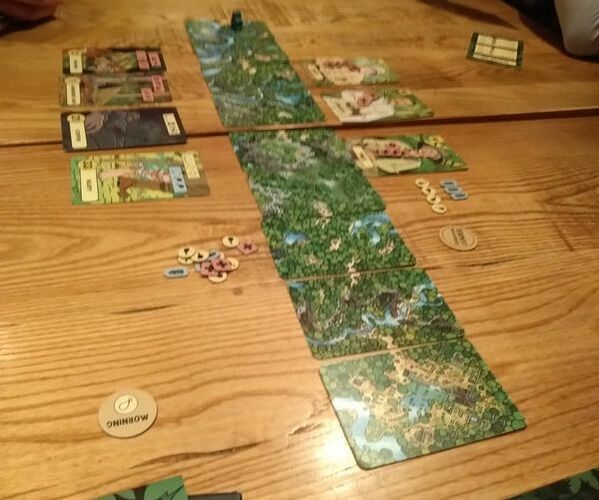|
19th February. Game Night at The Sovereigns. The first time I saw 'The Lost Expedition' I though 'Wow - a Tintin game'! It looks like a Tintin game. It's not a Tintin game, but it's still a good game. Inspired by actual real reality! The Lost Expedition tells the tale of 3 intrepid explorers searching for 'The Lost City of Z', which as the name hints... is lost deep in somewhere nasty, somewhere you (and I'm assuming you're reasonably sane) would never want to go. Additionally, each of the 3 explorers has an area of expertise, these are; Jungle, Navigation and camping. more on expertise later. The Lost Expedition is a co-operative card game for up to 5 players. At the game start, a series of 9 'expedition' cards at laid out in order from left to right. A meeple representing the actual expedition is placed on card 1. The game is collectively won by getting the meeple on to the last card. Each expedition member is given 4 health tokens and the expedition is also communally granted some food and ammo tokens. The basics of game play are: Each player is dealt 4 cards, these are 'adventure' cards. Adventure is the game's way to saying 'really horrible'. Each turn is broken up into a day phase and a night phase. During each phase, every player will (one card at a time) play 2 adventure cards from their hand. These form the 'path' that the expedition must follow for that phase. However, the order in which the adventure cards become the path differs between night and day.
So now we know that adventure cards have encounters on them, but what are encounters and how do we deal with them? Dealing with an encounter usually involves spending some sort of resource, you may or may not get something in return for spending it. For example; you may encounter a dangerous wild animal that gives you 2 red options (you must pick 1 of the available choices). These options might be:
The game is full of these choices where you have to look ahead and figure out what is the best approach. A lot of the time dealing with an encounter is a matter of diminishing returns (with regards to your resources). Which is what makes your decisions tough and therefore important, which is what makes the game good. Spending resources; below is a list of the resources you will need to spend over the game:
So when you complete a path, discard all adventures cards and switch from day to night. When you complete a night phase, you spend a food and change back to day and deal new adventure cards to all players. Repeat until you reach the end of the game. You lose if:
And there you have it. The lost expedition can also be played solo and competitively in 2 teams, neither of which I've tried. But in co-operative play it's a good game, where every decision can matter and your constantly having to make hard choices. God alone knows how hard it was for real explorers. I'm glad that The Lost Expedition is as close to it as I'll ever need to get. One last nod goes to Garen Ewing's outstanding illustrations. They lend the game a whole adventure story feel, which I really liked. Port Royal - 022nd game of Port Royal.
You can find my original blog here.
0 Comments
Leave a Reply. |
AuthorI play, I paint. Archives
March 2024
Categories
All
|



 RSS Feed
RSS Feed
